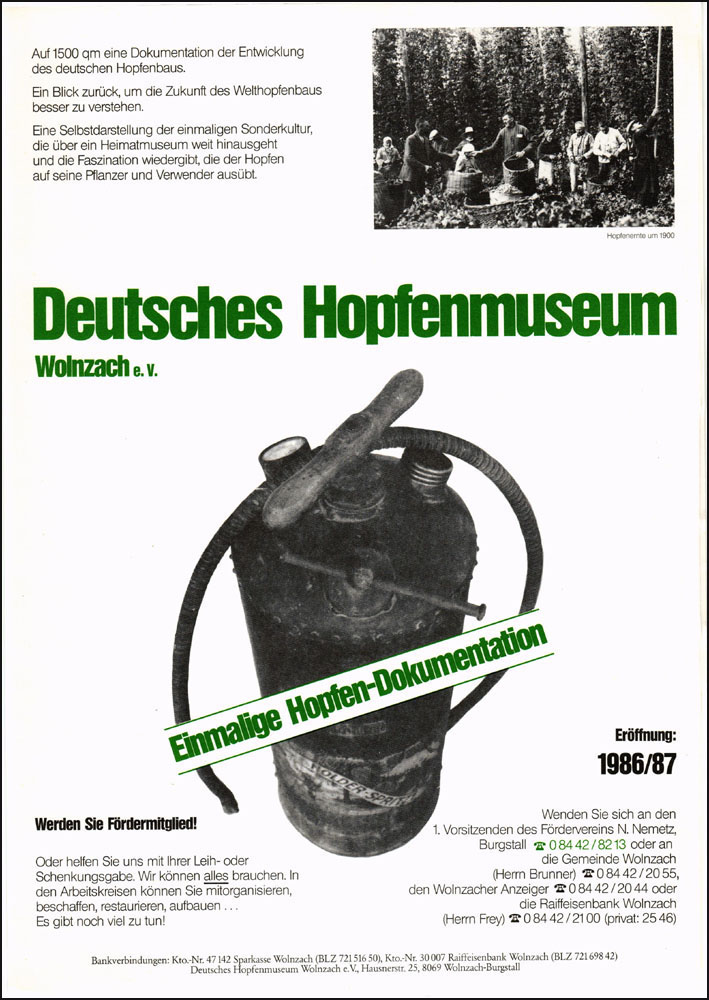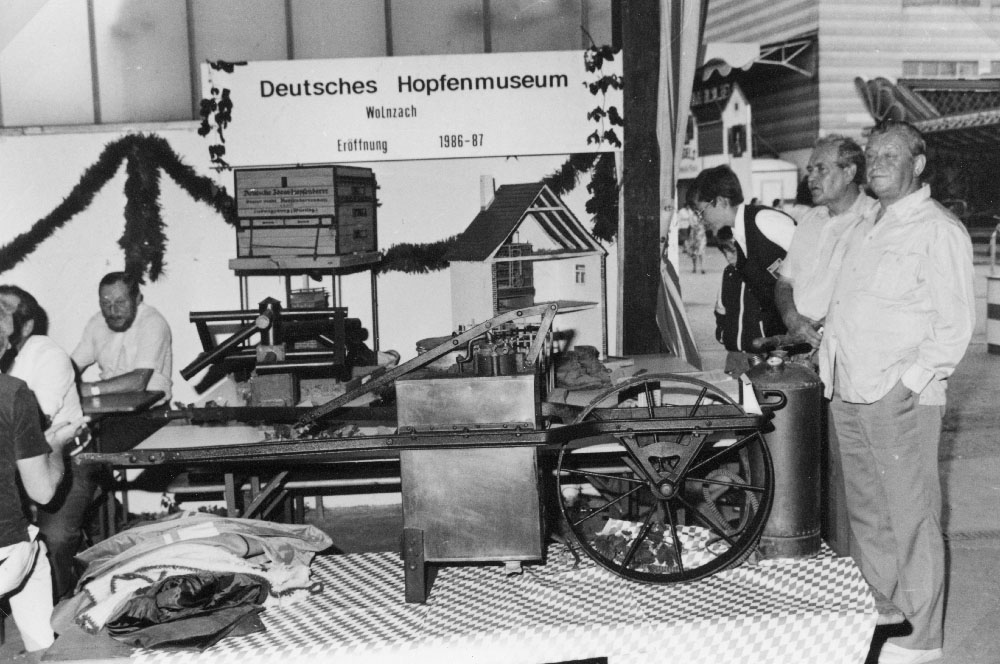40 years of the German Hop Museum Association
As a museum idea began to take shape
By Christoph Pinzl
No matter how many people are involved – someone always has the first idea. This was also the case with the German Hop Museum. Norbert Nemetz, a master electrician from Wolnzach and passionate collector, had noticed that the Hallertau had long been regarded as the largest hop-growing region in the world, but had nothing to offer in the way of a museum on this subject. In his opinion, this needed to be changed. After all, the people of the Hallertau have lived from and for hops for generations. And a lot had changed in the course of this centuries-old history, a lot, more than enough to fill a museum.
Months earlier, he had already gathered numerous like-minded people around him. Working groups had been formed for public relations work, for the acquisition of exhibits, for the museum concept. On July 10, 1984, the time had come. The big meeting took place in the Bräustüberl Wolnzach. Its purpose: the “foundation of the German Hop Museum Wolnzach e.V. (…) in the name of 60 registered founders”, according to the local newspaper. After Nemetz’s fiery appeal to finally take on the fading history of hops, all the predicted members of the association were actually on the list in the end.
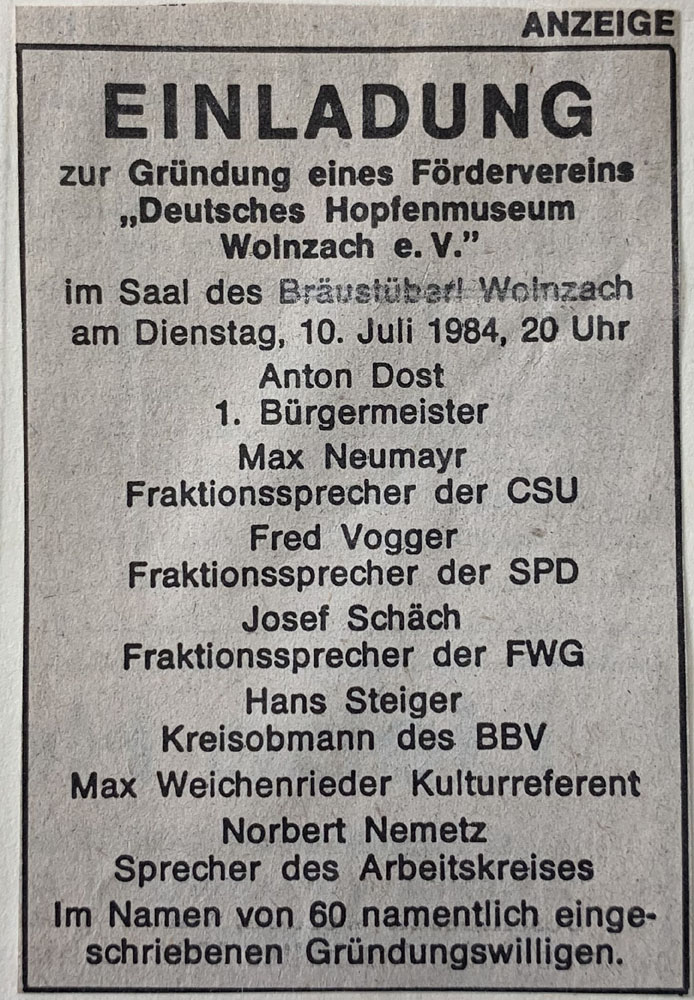
The starting position for the future museum was therefore also unusual. No local politician wanted to erect a monument, no company willing to invest wanted to build an experience center, no dusty collection finally found a home, no listed building was put to good use. The German Hop Museum was a museum for and from people, from the very beginning. Initiated by the people whose history it was supposed to be about. The most important guideline was therefore clear right from the start: whatever would be presented in the future museum – it should not simply be about objects. The focus should be on people. People who were involved with hops, their cultivation, marketing, use and benefits.
Initially without any professional support, they got started, as the task list was full to bursting. The first task was to put together a collection from scratch. In an astonishingly short time, the collection of exhibits, library and archive grew to what is now probably the largest special collection on hops in the world. The new museum was not only promoted in Hallertau villages and communities. After all, they took their own name seriously: it was to be a “German Hop Museum”, not a local heritage event. So the museum was also presented in other German hop-growing regions, in Tettnang on Lake Constance, in Franconia, in East Germany, bringing equipment, archives and photographs from there to Wolnzach. They contacted archives, libraries, historians and local experts throughout Germany and collected the scattered traces of former hop growing from all over the country.
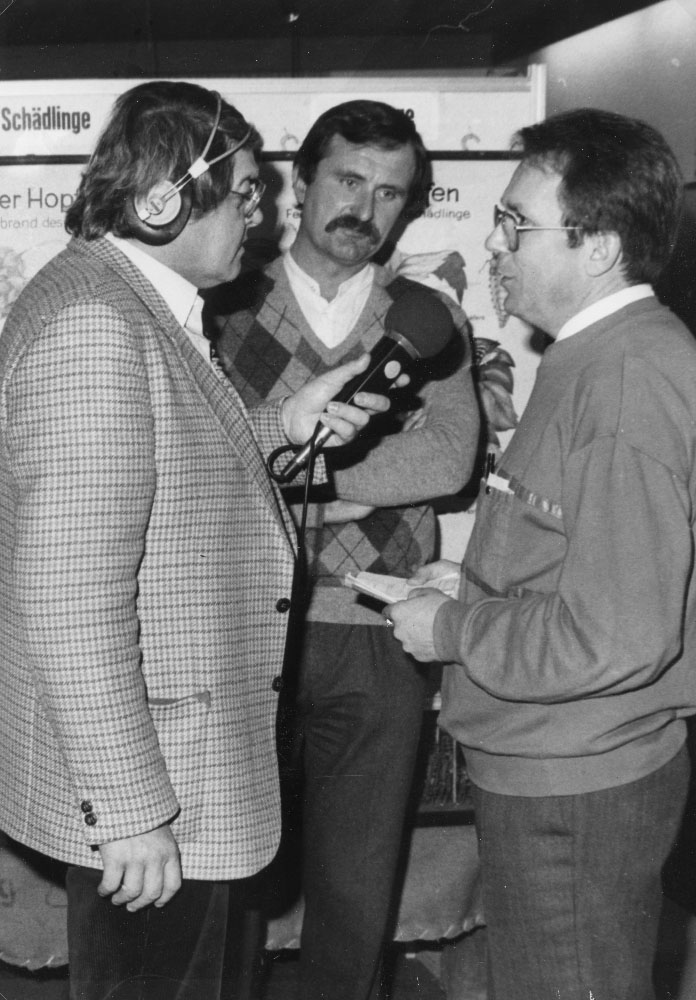
The press also soon became interested in the Wolnzach museum project: museum director Norbert Nemetz answers questions from a radio journalist in 1984.
After just a few months, the eager members of the association were able to present their first exhibition to the press. Now the first political support came forward. None other than the Bavarian Minister of Agriculture at the time, Dr. Hans Eisenmann, was among the guests, was impressed and signaled his support. This soon followed in the form of the Bavarian specialist authority, the “Landesstelle für die nichtstaatlichen Museen in Bayern”, which sent speakers to Wolnzach, gave valuable tips and provided a viable museum framework. The association was happy to be inspired. As early as 1990, the current museum sponsor, the Zweckverband Deutsches Hopfenmuseum, consisting of the District of Upper Bavaria, the District of Pfaffenhofen a.d. Ilm and the Market Town of Wolnzach, came into being. In order to convince the politicians of his idea, Norbert Nemetz traveled to Munich and gave a fiery speech for his museum plan in front of the assembled district assembly.
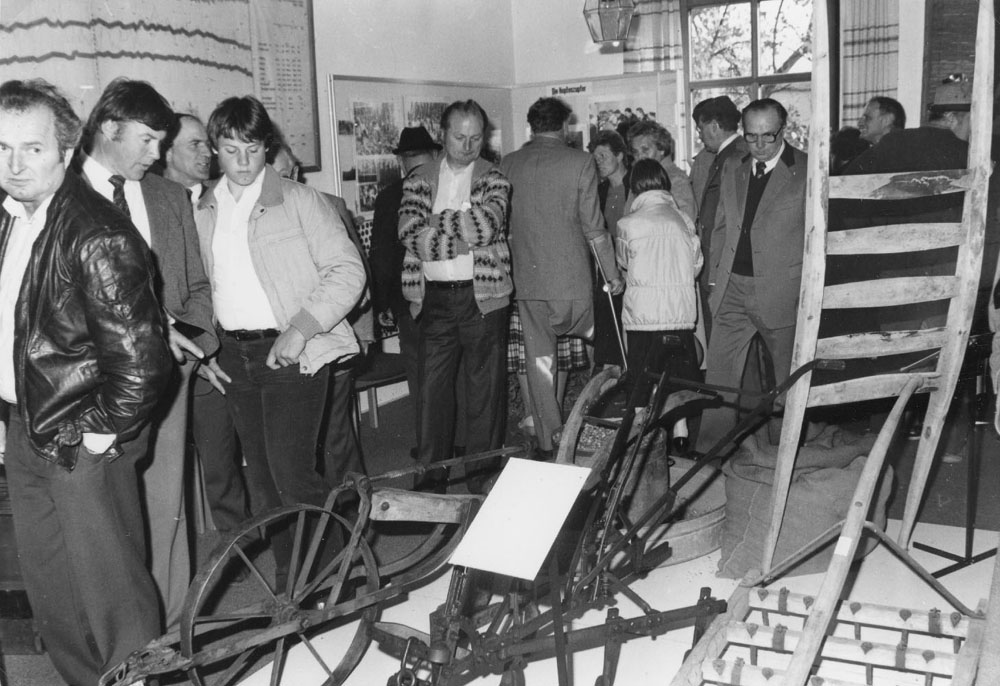
Even the very simple special exhibitions in the early years attracted a large audience.
More and more, the whole project was given a professional touch, museum experts and historians were given their first contracts. The old Wolnzach fire station was soon found as a depot for the ever-growing collection. At the end of the 1980s, the association also set up the first provisional display collection there, through which the first chairman personally guided a growing number of visitors with great eloquence and charm. Guided by the specialist authorities, the association also began the first basic inventory of the collection items.
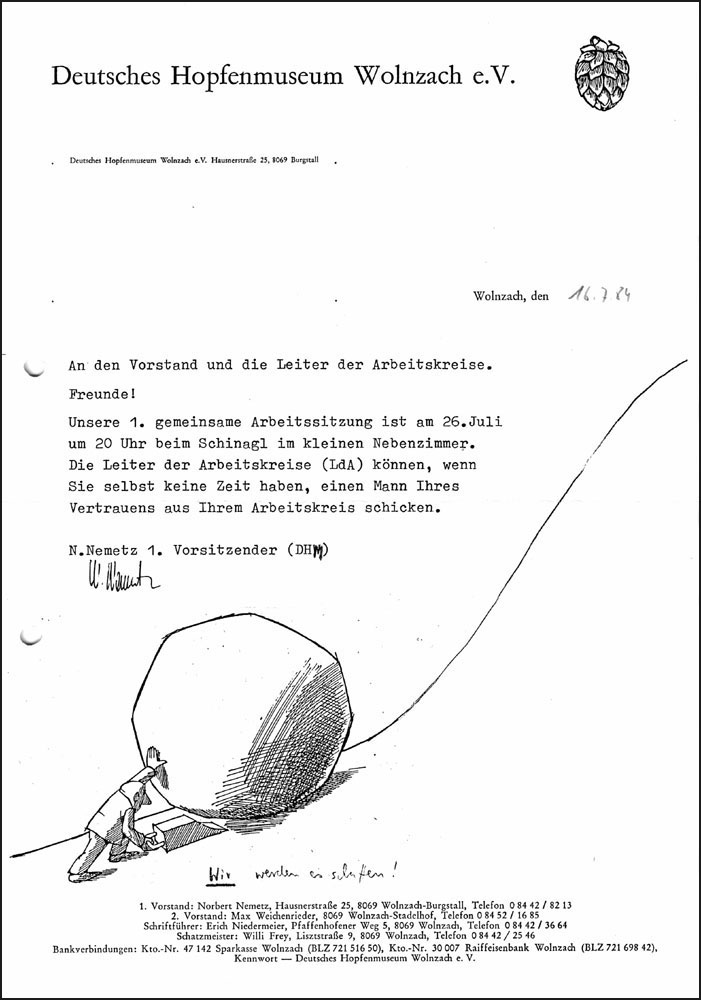
Everything got off to a great start, until suddenly disillusionment set in. When a request was made for a historic building in the center of Wolnzach to be made available for the final museum solution, the town council reacted with unexpected reserve. In the middle of Wolnzach, on such a prime site, for such a museum? Were there no alternatives?
Not easy to find. And so the initial storm of enthusiasm gradually gave way to a sober search for the right location. Everything was actually ready, the collection grew and grew, even a full-time museum director was allowed to become active. Special exhibitions were organized, the museum founded its own series of publications, published, advertised, built a new depot (with a great deal of personal input from the chairman of the association) and guided over 100 groups through the new temporary home every year. In the meantime, all those responsible at the Wolnzach market were fully behind the idea. Even the Wolnzach town hall cellar was considered as a possible museum location, awakened from its slumber by the commitment of the association and its tireless chairman.
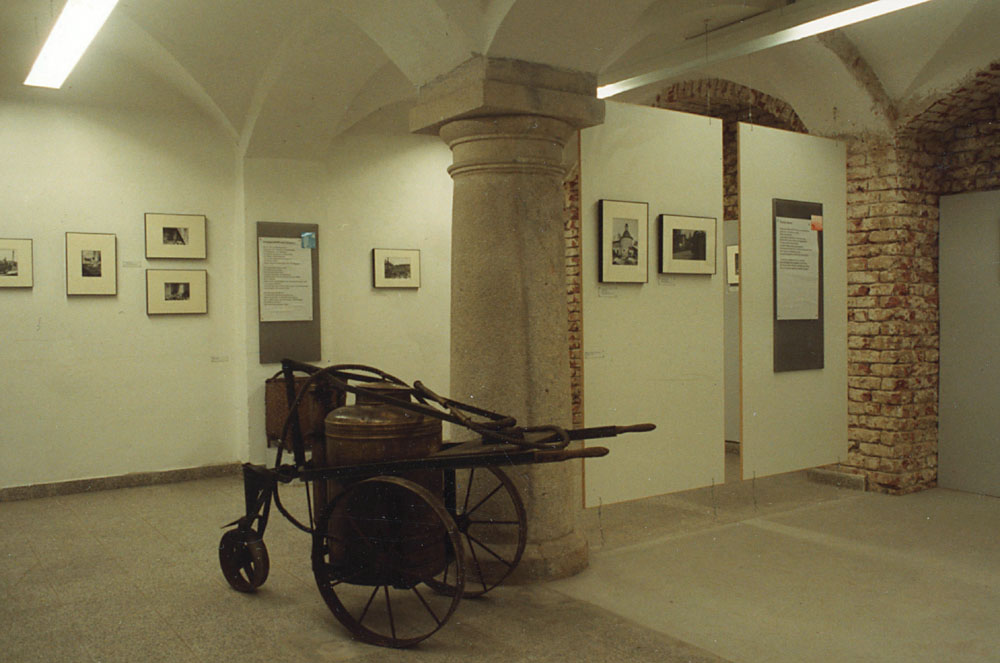
The Wolnzach town hall cellar after the provisional renovation by the German Hop Museum Association.
Nevertheless, it was to take another 21 years from the year the association was founded before the final museum could be opened. Perhaps one of the most astonishing things about this long wait was that almost all of the original members remained loyal to the association. On the contrary, more and more institutions, companies from the hop and brewing industry, local businesses and committed private individuals pledged their support as “association sponsors”.
Soon after the museum opened, Norbert Nemetz handed over the baton to Johannes Sommerer, who successfully continued the association’s work as chairman and introduced many new ideas. The tough day-to-day business now awaited him, the task of constantly bringing life to the museum rooms and keeping the members on board. He was succeeded in 2016 by Lorenz Reich, who is still in charge of the association today. The association’s youngest child is called “Showroom Deutsches Hopfenmuseum”. The aim is to bring to public attention all the things that have not yet found a place in the museum’s permanent exhibition. Perhaps it is the fate of the association that this project is also unexpectedly dragging on. However, with the support of its many loyal members, the association’s board will certainly be able to bring this plan to a successful conclusion soon.
